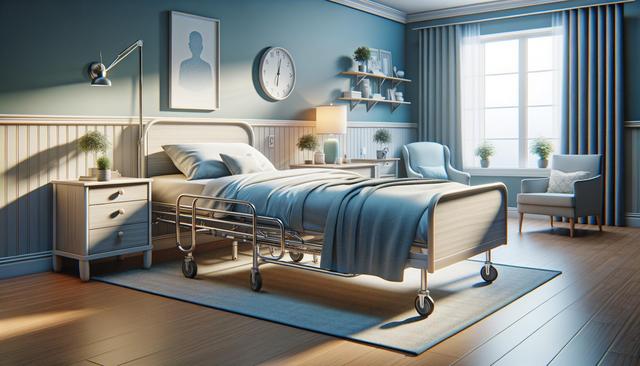Understanding the Needs of Seniors with Disabilities
As individuals age, physical limitations often become more pronounced, especially for those living with disabilities. Mobility issues, chronic pain, and conditions such as arthritis or stroke aftereffects can greatly affect a senior’s ability to get in and out of bed or find a comfortable sleep position. Senior disabled beds are designed to address these challenges by offering features that improve comfort, accessibility, and safety. Understanding these specific needs is the first step in selecting the right bed.
Key considerations when choosing a bed for a senior with disabilities include:
- Ease of transfer in and out of bed
- Adjustable height and positioning for better support
- Pressure relief to prevent bedsores
- Safety features like guard rails and sturdy frames
By focusing on these elements, caregivers and family members can ensure that their loved ones maintain a higher quality of life and greater independence in their daily routines.
Types of Beds Designed for Senior Use
There are several types of beds designed specifically for seniors with disabilities. Each comes with its own set of features and benefits, and the right choice will depend on the individual’s medical needs and personal preferences. Electric adjustable beds, for instance, allow users to change the position of the head, feet, and overall bed height using a remote control. This can be particularly helpful for those who spend a significant amount of time in bed due to limited mobility.
Other options include:
- Low beds, which reduce the risk of injury from falls
- Hospital-style beds with advanced adjustability and support functions
- Bariatric beds for heavier individuals requiring extra strength and durability
Each of these options can be customized with accessories like specialized mattresses, overbed tables, and support rails to further enhance usability and safety.
Important Features to Look For
When selecting a senior disabled bed, it’s important to focus on features that enhance both comfort and safety. Adjustable positions are essential for helping seniors sit up, lie down, or elevate their legs to improve circulation. Beds with motorized adjustments are often preferred for their ease of use and precision. Additionally, beds with side rails or grab bars can provide added security, especially for individuals who are at risk of falling.
Look for the following features when evaluating beds:
- Remote or handset controls for easy adjustability
- Mattresses designed for pressure relief (such as memory foam or alternating pressure systems)
- Locking wheels for stability
- Height adjustability to match wheelchair or caregiver access
Having the right combination of these features can make a significant difference in the daily experience of a senior living with a disability.
Supporting Independence and Caregiver Assistance
Senior disabled beds not only support the comfort of the individual but also make care tasks more manageable for caregivers. Being able to adjust the bed to an ergonomic height can reduce the risk of strain or injury for caregivers, especially when assisting with repositioning or personal care. Beds that can be raised or lowered easily provide greater flexibility in care routines and support more efficient workflows in home and assisted living settings.
Moreover, these beds can help seniors retain a sense of autonomy. With remote controls or simple mechanical levers, many seniors are able to adjust their beds independently, which can be empowering and reduce reliance on constant assistance. This blend of support and independence is a key factor in improving overall wellbeing.
Some additional caregiver-friendly features include:
- Trendelenburg and reverse Trendelenburg functions
- Programmable position settings
- Integrated lighting for nighttime visibility
These features make it easier to maintain a safe and comfortable environment for both seniors and those who assist them daily.
Investing in Long-Term Comfort and Safety
Choosing a senior disabled bed is an important investment in long-term health and comfort. While the initial cost might be higher than standard beds, the long-term benefits in safety, convenience, and care efficiency make it a valuable purchase. Many suppliers also offer financing plans or work with insurance providers to help manage costs, making these beds more accessible to families and individuals on fixed incomes.
Before making a purchase, it’s advisable to consult with healthcare providers or occupational therapists. Their guidance can help pinpoint the most suitable features based on the senior’s specific health conditions and mobility levels. Additionally, many providers allow for in-home trials or demonstrations to ensure the selected bed meets all practical needs.
Over time, the right bed can help reduce hospital visits, prevent injuries, and increase overall satisfaction with daily living. Whether for home use or assisted living, these beds play a crucial role in enhancing the quality of life for seniors with disabilities.
Conclusion: Prioritizing Comfort and Dignity
Senior disabled beds are more than just furniture—they are essential tools that support dignity, comfort, and independence in later life. With thoughtful design and user-centered features, these beds address the unique challenges faced by older adults with mobility issues. By understanding the different options and focusing on individual needs, families and caregivers can make informed choices that enhance both health and happiness. Investing in the right bed is a step toward a safer, more comfortable future for seniors and those who care for them.


